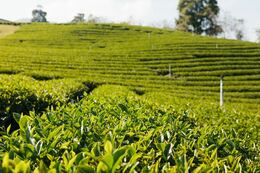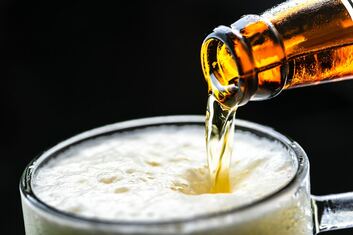|
When local Richmonders hear “Scott’s Addition”, they usually think about the breweries that are dispersed throughout this bustling neighborhood. Yes, Scott’s Addition is known for its plethora of breweries that inhabit big warehouses - along with the countless selection of beers offered - but there is in fact a lot of history buried beneath the surface, too. Located north of Carytown and The Fan District, this cultural neighborhood not only highlights the historical industrial movement within Richmond, but it also encompasses modern trends involving food, art, and music. What's in the name? In the early 1700s, the Mayo Plantation, owned by Colonel John Mayo, encompassed the city of Richmond. During this era, owning land represented wealth and respect. It was also common practice to give land as dowry in marriage in order to link two families together. Major General Winfield Scott, who was recognized for his heroic actions in the War of 1812 and Mexican War, was given part of the Mayo Plantation as dowry for marrying Elizabeth Mayo, daughter to Colonel Mayo. This piece of land inherited by Major General Scott became the neighborhood Richmonders now know as Scott’s Addition. This history brings to light how “Scott” was added to the neighborhood name. But where did “Addition” come from? It was not until 25 years later after Major General Scott’s death did Scott’s Addition undergo significant transformation. During the 20th century, a mass movement of businesses started to shift from downtown Richmond to the area now known as Scott’s Addition; in addition, there was a concentration of major transportation methods, including railways and highways, there - but the area was technically outside of the city grid. Because of these major changes, the area was annexed into the city of Richmond as an extra, well, “addition”! Transformation of scott's additionBeginning as a plantation and now a highly developed area, Scott’s Addition went through two distinct waves of development. Prior to the 1900s, the area was underdeveloped. When the first wave of development came in the early 1900s, it was minimal with some sparse residential dwellings built. By 1916, an increase in railway traffic and the creation of various train stations along the north and west side of Scott’s Addition started to slowly transform the undeveloped area. Even though there was a significant increase in transportation methods around the neighborhood, Scott’s Addition was originally used for residential homes, as stated in documented maps of the area. In 1927, however, the Zoning Ordinance was created, which redistricted designated zones for industrial purposes. This marked the beginning of the second wave of development. From the 1930s to the 1950s, factories, plants, and commercial buildings were built within the area, creating a lasting impression in Scott’s Addition. The "Addition" of Breweries and beer More than a third of the at least 28 breweries in the local Richmond area are concentrated in Scott’s Addition alone...and, there are likely more planned. How did this specific neighborhood attract brewers? To begin with, the Virginia beer boom blossomed due to the passing of the Senate Bill 604 in 2012, which allowed places to sell beer regardless if they sold food or not. In addition, though the number of residents already living in Scott’s Addition was not extremely high, brewers believed that establishing breweries in the area would attract more residents to move to the area. Lastly, breweries needed sturdy floors, high ceilings, and ample amount of space to brew delicious beer, and warehouses that were already established during the industrial movement created the perfect solution. Michael Isley, who was the first brewer to make his mark in Scott’s Addition, trusted his instincts and and opened up Isley Brewing Company in October 2013. Since then, breweries from left and right have been popping up. According to a news report, it has been stated that for every 137 apartments, there is a craft brewery. One could spend a day brewery hopping, as there are multiple breweries within a 5 mile radius. As a result, over a third of all craft beers coming from Richmond are solely made in Scott’s Addition. It is no wonder that Richmonders acknowledge Scott’s Addition for it’s constant flow of beer. What to see in scott's additionDespite the domination of the industrial movement in Scott’s Addition, followed by the mass of breweries, the neighborhood still offers cultural surprises through its architecture. From Colonial Revival to International Style to Art Deco, buildings of various styles reflect a wide spectrum of architecture that is hardly seen throughout other parts of Richmond. This unique aspect brings the unexpected edge to Scott’s Addition. With its historical past yet constant, modern additions to the neighborhood, Scott’s Addition remains to surprise local Richmonders year round. Even though this area is primarily known for its breweries, this area still attracts people who do not drink. There are plenty of trending food places that receive high reviews, including Lunch and Supper, Fat Dragon Chinese Kitchen, and Stella’s. There are also a couple of cute coffee shops that are great for getting work done outside the office. In addition, just outside Scott’s Addition are the Virginia Museum of Fine Arts and Carytown. With plenty to offer, it is crazy to know that Scott’s Addition almost didn’t become a part of Richmond. However, whether you’re grabbing a cold beer on a hot summer’s day or taking a stroll through the beautiful neighborhoods, you will be glad that it did.
0 Comments
Leave a Reply. |



 RSS Feed
RSS Feed

